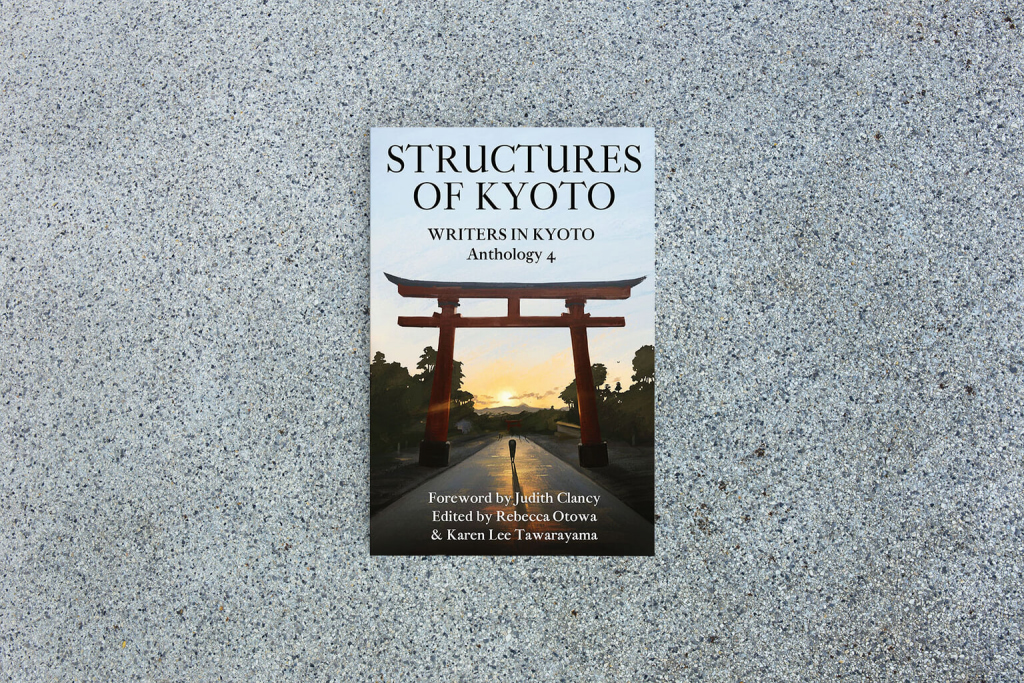“Kobayashi Sensei spoke no English, I spoke very little Japanese. Yet we connected immediately through facial expressions, hand gestures, smiles and my simply trying to copy what Sensei showed me.”
That was an excerpt from Rona Conti’s “What does this say, Sensei?” The essay is the first story you’ll read in Structures of Kyoto.
If you work in the publication or creative industries in Japan, you will have certainly heard of Writers in Kyoto (WiK). Started in 2015 by author John Dougill, the group counts over 60 members and hosts its own writing competition. WiK also publishes anthologies. The latest, Structures of Kyoto, explores the physical, spiritual and artistic elements of the city. It features works by writers from a variety of backgrounds, from haiku and fiction to essays and journal excerpts.

TW prides itself on supporting the creative community in Japan and when I had the opportunity to read a review copy of the anthology, I was absolutely thrilled. But I also felt a bit like a fraud. The truth is I only visited Kyoto once, and that was three years ago. I have only fond memories, but very little knowledge left of what I had seen and learned on my trip.
I will admit that, as I read through each story, essay and poem, some references went over my head. This said, I was able to still visualize every story thanks to a map included in the first pages of the book, which helped. It felt like taking a walk through Kyoto, all from my apartment in Kanagawa.
There was also something strangely comforting. As I read through Structures of Kyoto, I recalled my own journey to Japan. Only 22 at the time, I remembered feeling this intense sense of place. This emotional connection to a city that I still, after almost four years, don’t know very well, other people feel this too.
I am not alone. We are not alone.
Structures of Kyoto is a must-read if you live in the old capital; a collection that features stories about Kyoto from writers who evidently have a special relationship with the city. It’s a wonderful opportunity to reflect on your own feelings about where you live. I am all about Tokyo and so is TW, but reading Structures of Kyoto made me reminisce of all the reasons why I can’t seem to want to live anywhere else (to my parents’ disappointment).
I also recommend this book for anybody who lives in Japan or has any interest in traditional Japanese culture. You are guaranteed to learn something new, either through editor Rebecca Otowa’s personal essay on tea or through Mark Hovane’s deep-dive into Zen gardens.
Where To Get Your Copy of Structures of Kyoto
For some insights on the contents of the book, check out this post on the Writers in Kyoto website.
Structures of Kyoto is available in print and Kindle formats. You can purchase your copy on Amazon.com, Amazon.co.jp and other Amazon marketplaces.









